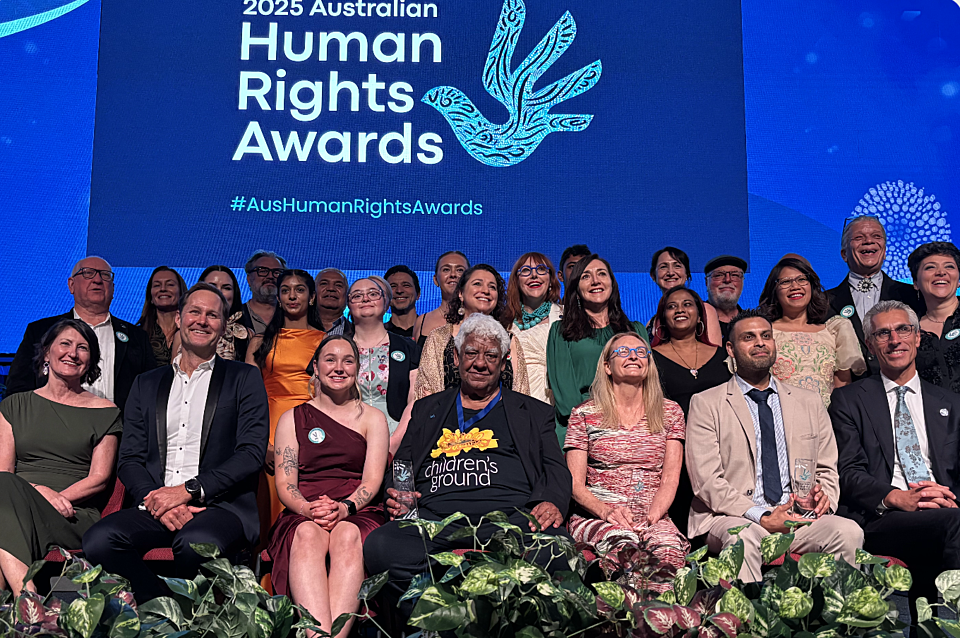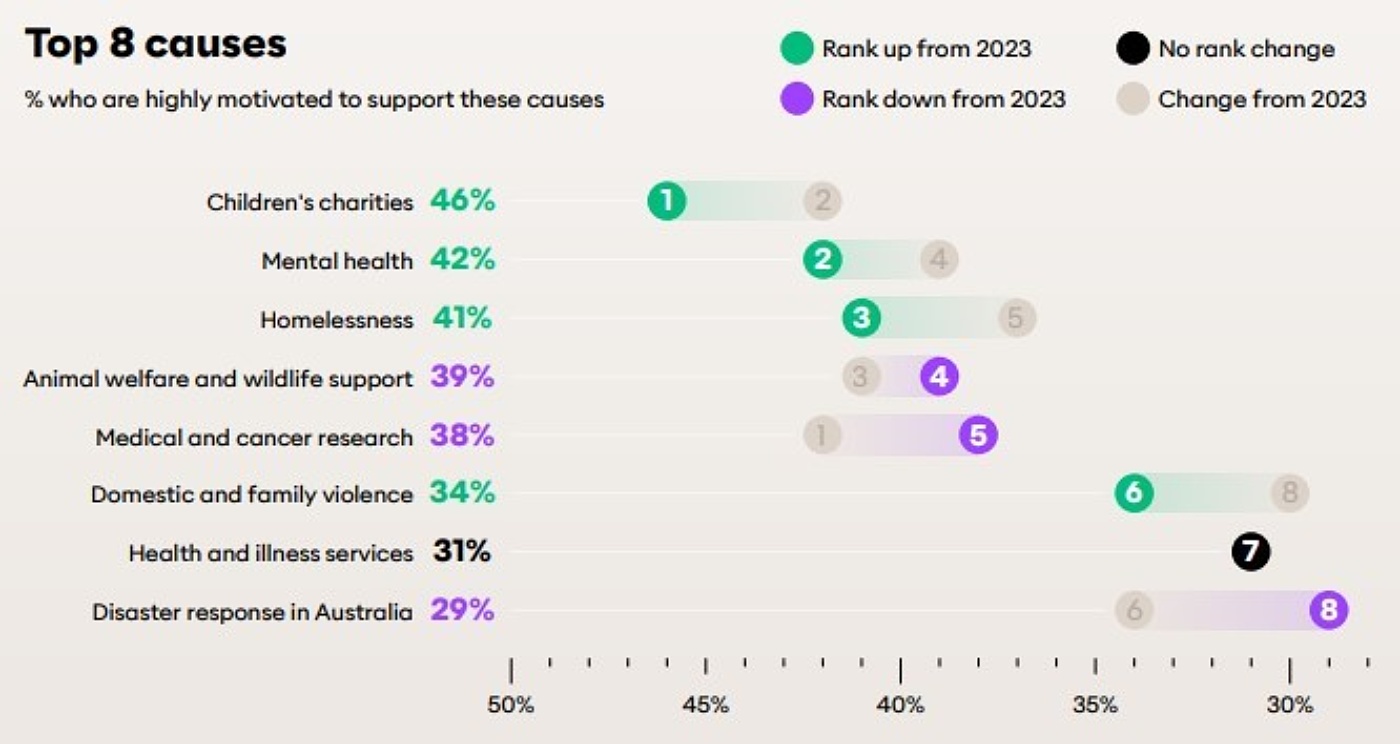
William Tilmouth wins Australia’s highest human rights award and condemns continuing Indigenous policies
Posted on 17 Dec 2025
The founding chair of the ambitious systems-change not-for-profit organisation Children’s Ground,…
Posted on 26 Mar 2024
By Greg Thom, journalist, Institute of Community Directors Australia

Generational change is upending traditional charitable giving patterns according to new research.
A study by social research firm McCrindle has found donors are moving from predictable committed giving toward more spontaneous need-driven giving.
The change is being spurred by Gen Z donors (aged 18–29), who are more likely to give when they hear about a need or issue in the community or are approached to donate or offer support.

More than half of Baby Boomers (aged 60–78), by contrast, are committed givers who donate semi-regularly throughout the year or on a regular basis.
McCrindle's director of advisory, Ashley Fell, said the evolution in giving patterns meant the sector's stable donation base was shifting, something that could have significant implications for charities and not-for-profits.
While 38% of all donors give to a charitable organisation when they hear about a need or issue, at the other end of the scale, just 13% give on a frequent or regular basis – down from 17% in 2017.
“This means that a committed, consistent revenue stream for charities is coming under some pressure, and we believe that it is essential to understand the way that donors are choosing to engage so that charities can design fundraisers that maximise that engagement,” Ms Fell said.
“For instance, with 38% [of all donors] who give when they hear about a need or an issue, it’s important to not rely solely on annual campaigns, in terms of engaging them but exploring how to amplify the cause and provide multiple opportunities for people to respond throughout the year.”
Ms Fell made the comments during the online launch of a new McCrindle research report, Empowering Impact: Understanding giving behaviour, volunteering, and advocacy in the not-for-profit landscape.

The report found that an increasing number of charitable givers are cause-driven and choose to give on their own terms - responding on a needs basis rather than committing to a single organisation.
Key findings include:

“I’ve been speaking to a few NFP leaders over the past few weeks and it’s a really interesting landscape to be thinking about with regards to engaging these younger generations of donors.”
The report found that younger generations are more likely than their older counterparts to be opportunity givers, with 65% of Gen Z in this category compared to 49% of Baby Boomers.
More than 60% of Gen Y (aged 30-44) and 56% of Gen X (45-59) also favour opportunity giving.
More than half (51%) of Baby Boomers, however, are considered committed givers, compared to just 35% of Gen Z.
“I’ve been speaking to a few NFP leaders over the past few weeks and it’s a really interesting landscape to be thinking about with regards to engaging these younger generations of donors,” said Ms Fell.
She said one question she had been asked consistently was difficult to answer:
“Is it worth engaging with these younger people when they’re not giving in the same ways and are in some ways not as engaged or committed as older generations who many organisations and NFPs rely on for that committed, consistent behaviour?”
“Our [McCrindle's] definite belief as an organisation is, even though it’s hard, yes it’s definitely worth it.”
Children’s charities, mental health and homelessness top the list of causes Australians donated to and volunteered with in 2024.
McCrindle's director of advisory, Ashley Fell, said that after years of little change in the top three rankings, there had been a repositioning this year.
“We have seen a steady climb in support for the cause of mental health from 29% in 2017 to 42% today, and this is largely being driven by younger donors,” she said.
“More than half of Gen Z are highly motivated to give financially or to volunteer for an organisation associated with this area.”
This compared to just over 40% for Gen Y and Gen X and 28% for Baby Boomers.
The entry of children’s charities, mental health and homelessness into the top three came at the expense of animal welfare and wildlife support, medical and cancer research and Australian disaster response, which all fell in the rankings compared to the previous year.
“What we are seeing here is that younger donors are driving support for the causes of mental health as well as youth support and human rights,” said Ms Fell.
“By comparison, the older generation givers and the Baby Boomers are giving support for medical and cancer research and disaster response in Australia.”

Ms Fell said while younger generations are more likely to be opportunity givers, this does not mean they give less frequently or are less generous than their older counterparts.

The report revealed Gen Z donors are more likely than Baby Boomers to give at least monthly and are more likely to have donated $200 in the past 12 months.
Generation Y, who are in their prime years in terms of earning capacity, are also more likely to be generous with two out of five (41%) donating $200 or more in the past year.
“As we think about these donations especially in regard to younger givers, we have to keep in mind that these donations are ... often spread among different charities and a greater variety of charities than the committed giver who might be more committed to one or two organisations,” said Ms Fell.
She said this again highlighted the challenge for charities in deciding where to spend their limited resources.
“Do you focus on a smaller proportion of committed givers and higher value givers or engage numerous smaller givers?
“Of course, there are risks associated with each of these options, but engaging the future donor to ensure the long-term sustainability and viability of your organisation, is essential we believe.”

Posted on 17 Dec 2025
The founding chair of the ambitious systems-change not-for-profit organisation Children’s Ground,…

Posted on 17 Dec 2025
As we head into the holiday period, the number of Australians battling homelessness has hit crisis…

Posted on 17 Dec 2025
Posturing by the US president about Europe's immigration policies, even warnings of future…

Posted on 17 Dec 2025
For this final Community Advocate edition of the year, we reviewed a whole year’s worth of stories…

Posted on 16 Dec 2025
Lex Lynch spent more than two decades in the climate change and renewables field before last year…

Posted on 16 Dec 2025
As Australia prepares to welcome its one millionth refugee, human rights advocate and former…

Posted on 11 Dec 2025
Community Directors trainer Jon Staley knows from first-hand experience the cost of ignoring…

Posted on 10 Dec 2025
Adele Stowe-Lindner, Executive Director, Community Directors The Institute of Community Directors…

Posted on 10 Dec 2025
The Australia Institute has called on the federal government to force Australian businesses to be…

Posted on 10 Dec 2025
Economic empowerment is essential to enabling recovery, restoring agency and preventing future…
Posted on 10 Dec 2025
A long-time advocate for rough sleepers in northern New South Wales has been named her state’s…

Posted on 10 Dec 2025
What a year 2025 has been, particularly at a national level where the Parliament and politics as we…